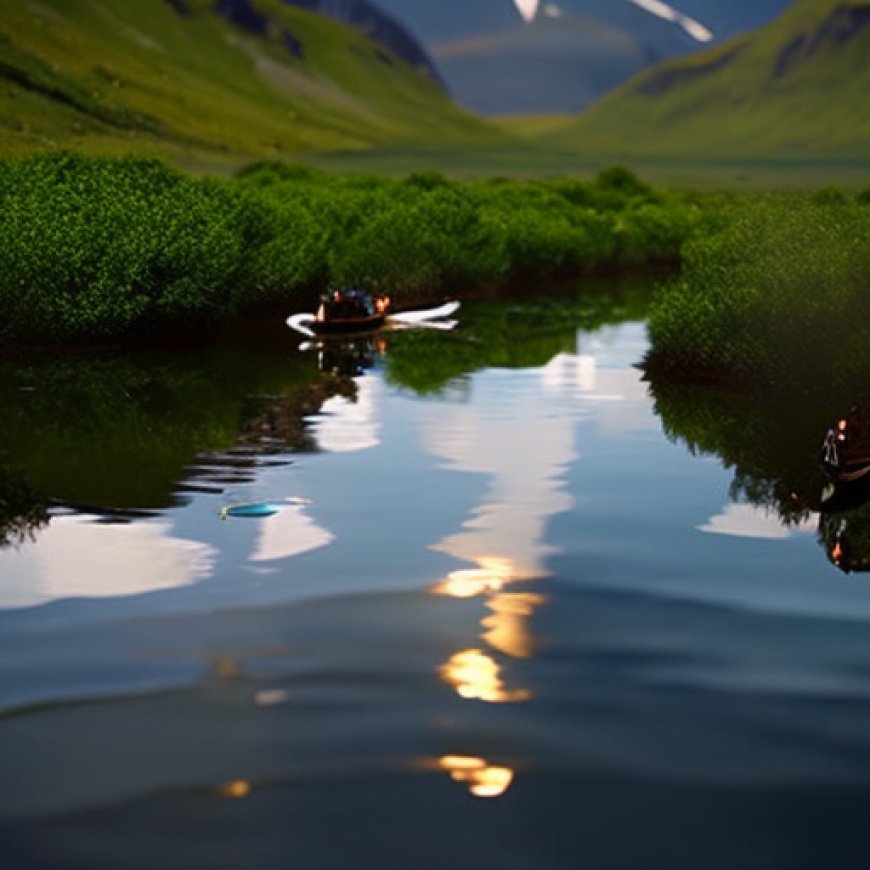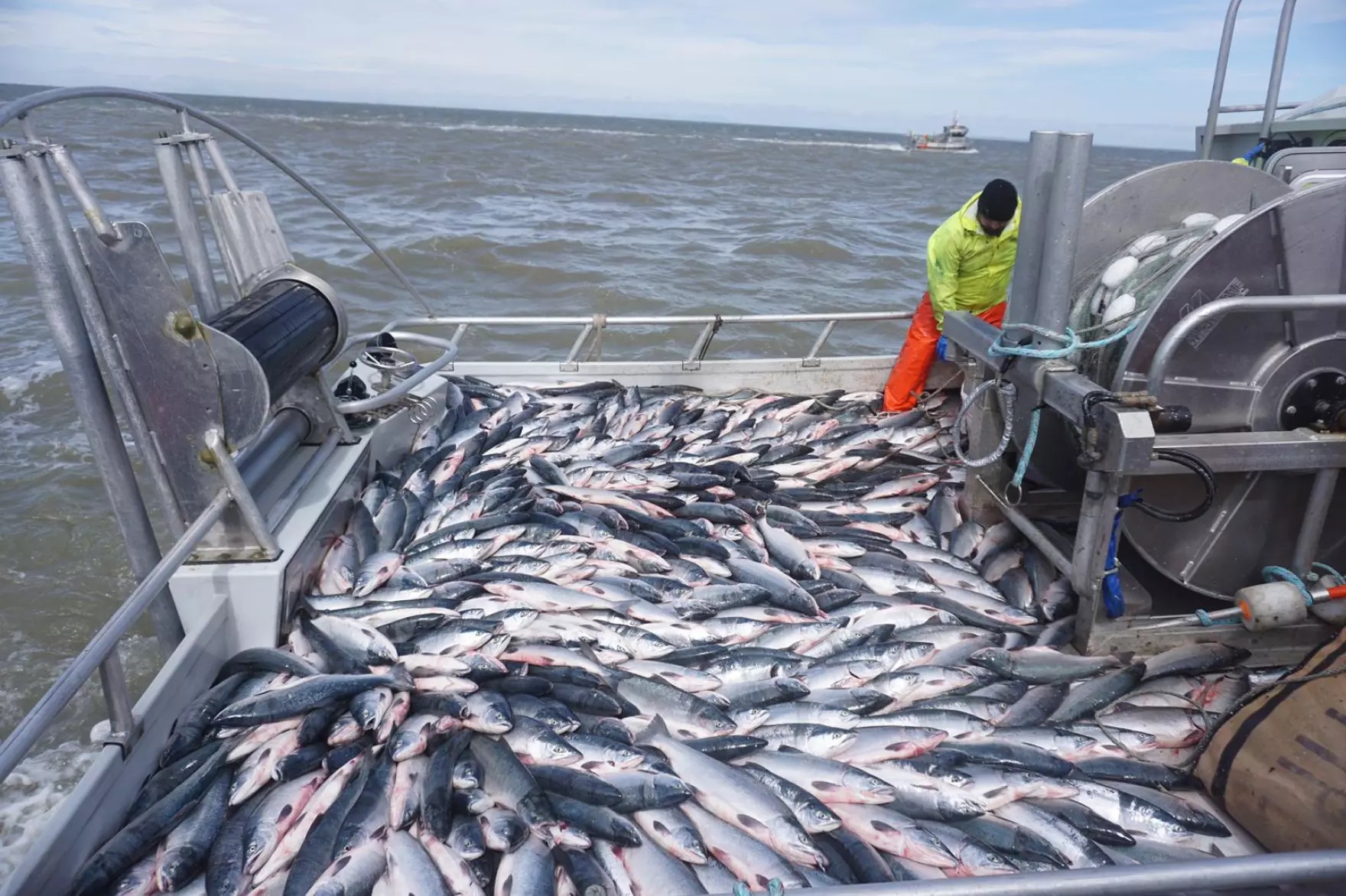What climate change and extreme temperatures could mean for Bristol Bay salmon
What climate change and extreme temperatures could mean for ... Alaska Public Media News


Bristol Bay Sockeye Populations and the Impacts of Climate Change

Introduction
This report examines the impact of climate change on Bristol Bay sockeye populations and the potential tipping points that could affect their sustainability. The Sustainable Development Goals (SDGs) are used as a framework to analyze the implications of climate change on the fishery industry and the communities dependent on it.
Climate Change and Variability
Climate change is not just about warming temperatures; it also involves increased variability in weather patterns. This variability, characterized by cold, wet, and stormy summers, poses a significant challenge to Bristol Bay salmon populations. The Alaska Department of Fish and Game’s chief salmon fisheries scientist, Bill Templin, emphasizes the importance of understanding this variability in the context of climate change.
The Role of Freshwater Lakes
Freshwater lakes in Bristol Bay serve as a natural buffer to temperature changes. These deep and stratified lakes allow salmon to dive deep and escape warmer surface temperatures. This ability to adjust their depth helps them find the most comfortable water temperature, enabling them to return to spawn earlier if ocean temperatures are too warm. The lakes act as a critical factor in the success of salmon populations.
Zooplankton and Food Availability
Bristol Bay’s spawning grounds are experiencing an increase in zooplankton, which serves as a food source for sockeye salmon. The warmer top layer of lakes in Bristol Bay creates favorable conditions for the growth of zooplankton, resulting in more food available for juvenile sockeye. This abundance of food leads to well-fed fish, increasing their survival rates as they migrate to the ocean.
Long-Term Implications
While the lakes provide a buffer for spawning salmon, there is a concern about the tipping point when climate change alters water temperature beyond the optimal range. Researchers suggest that changes in the behavior of sockeye, such as spawn and run timing, may occur over the long term. The complex nature of ecosystems makes it challenging to predict the exact consequences of climate change on Bristol Bay sockeye populations.
Impacts on the Fishing Industry and Communities
The potential impacts of climate change on Bristol Bay sockeye have significant implications for the fishing industry and the communities that depend on it. With an estimated value of over $2 billion, any changes in sockeye populations could have massive economic consequences. The sustainability of the fishery and the well-being of the communities are at stake.
Managing Climate Change
The Alaska Department of Fish and Game acknowledges the importance of managing the impacts of climate change on Bristol Bay watersheds. While their primary focus is on management rather than research, they recognize the need to adapt to future climate changes. Adapting to these changes will be crucial for both the fishing industry and the ecosystems of Bristol Bay.
Conclusion
Climate change poses challenges to Bristol Bay sockeye populations, but the lakes and rivers of the region provide a buffer against temperature changes. However, there is a tipping point beyond which the ecosystem may be disrupted. Understanding and managing the impacts of climate change are essential for the sustainability of the fishery industry and the communities that rely on it.
SDGs, Targets, and Indicators
1. Which SDGs are addressed or connected to the issues highlighted in the article?
- SDG 13: Climate Action
- SDG 14: Life Below Water
- SDG 15: Life on Land
2. What specific targets under those SDGs can be identified based on the article’s content?
- SDG 13.1: Strengthen resilience and adaptive capacity to climate-related hazards and natural disasters
- SDG 14.2: Sustainably manage and protect marine and coastal ecosystems to avoid significant adverse impacts
- SDG 15.1: Ensure the conservation, restoration, and sustainable use of terrestrial and inland freshwater ecosystems and their services
3. Are there any indicators mentioned or implied in the article that can be used to measure progress towards the identified targets?
- Indicator for SDG 13.1: Number of countries implementing national adaptation plans
- Indicator for SDG 14.2: Proportion of coastal and marine areas protected
- Indicator for SDG 15.1: Coverage by protected areas of important sites for mountain biodiversity
The article discusses the impact of climate change on Bristol Bay sockeye populations, highlighting the need for resilience and adaptive capacity (SDG 13.1). It also mentions the importance of managing and protecting marine and coastal ecosystems (SDG 14.2) and ensuring the conservation and sustainable use of terrestrial ecosystems (SDG 15.1).
Based on the content of the article, the specific targets that can be identified are SDG 13.1, SDG 14.2, and SDG 15.1.
The article mentions the need for countries to implement national adaptation plans as an indicator for measuring progress towards SDG 13.1. It also implies the need to measure the proportion of coastal and marine areas protected as an indicator for SDG 14.2. Additionally, the coverage by protected areas of important sites for mountain biodiversity can be used as an indicator for SDG 15.1.
4. Table: SDGs, Targets, and Indicators
| SDGs | Targets | Indicators |
|---|---|---|
| SDG 13: Climate Action | 13.1 Strengthen resilience and adaptive capacity to climate-related hazards and natural disasters | Number of countries implementing national adaptation plans |
| SDG 14: Life Below Water | 14.2 Sustainably manage and protect marine and coastal ecosystems to avoid significant adverse impacts | Proportion of coastal and marine areas protected |
| SDG 15: Life on Land | 15.1 Ensure the conservation, restoration, and sustainable use of terrestrial and inland freshwater ecosystems and their services | Coverage by protected areas of important sites for mountain biodiversity |
Behold! This splendid article springs forth from the wellspring of knowledge, shaped by a wondrous proprietary AI technology that delved into a vast ocean of data, illuminating the path towards the Sustainable Development Goals. Remember that all rights are reserved by SDG Investors LLC, empowering us to champion progress together.
Source: alaskapublic.org

Join us, as fellow seekers of change, on a transformative journey at https://sdgtalks.ai/welcome, where you can become a member and actively contribute to shaping a brighter future.







